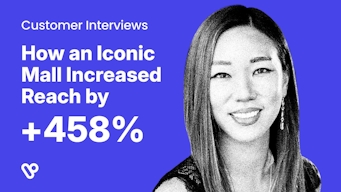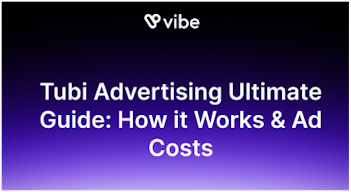How to Leverage MVPD, vMVPD, and OTT in your Ad Campaigns
Over the last 5 years, Streaming Television - in all its gloriously confusing formats - has gone from niche content delivery system to mainstream. Long form, premium streaming formats have especially grown in viewership, with over 94% of US households now owning at least one connected device. Today, advertisers large and small are playing catchup to develop compelling campaigns on a net new channel. What a challenge… and what an opportunity!
Because CTV advertising is firmly entrenched in the world of adtech, there’s no getting away from confusing acronyms, but we’re here to help! Understanding the difference between MVPDs and vMVPDs, for example, is a great way to understand where “linear” (traditional) and “CTV” (Connected Television) differ and where they intersect. Let’s dive in!
What are MVPDs and how do advertisers use them?
MVPD stands for Multichannel Video Programming Distributor. It designates what you may have already been calling “linear” TV and mainly refers to cable, satellite, and broadband distributors like Xfinity, DISH Network, DirecTV, Spectrum, and Time Warner Cable.
Typically, MVPDs offer live programming “bundles” at different price points and/or focused on different genres, with some also offering on-demand content. Either way, the content can only be viewed on television sets equipped with the appropriate hardware.
Viewers anxious to take advantage of vast content libraries in the 90s and early 2000s subscribed to MVPDs en masse, with traditional cable television subscriptions in the US peaking around the year 2000, at 68.5 million. As more and more content became available online, however, the allure of inflated, often expensive, un-customizable cable bundles began to fray.
Today, less than 50% of US households subscribe to MVPDs, defying industry predictions made less than even a year ago!
Why is MVPD still relevant
If cable is on its way out, you may be wondering why even discuss it at all, but cable retains a distinct advantage - for now - over its streaming competitors: live TV. The number one reason viewers are still clinging to MVPDs is to watch live sports, news, and award shows, which continue to elude most subscription-based streaming services.
That monopoly is quickly crumbling, however:
- Amazon recently purchased an exclusive, 11-year Thursday Night Football deal, marking the first time the National Football League has sold an exclusive national rights package to a digital streaming service, and
- YouTube TV just penned a deal for NFL’s out-of-market Sunday afternoon games package on CBS and Fox worth more than $2 billion per season.
Because of MVPD ads’ high price tag, advertisers working in that format are usually legacy TV and media buyers with large budgets and multi-platform campaigns, who have room to experiment. Rather than abandon linear TV advertising altogether, most are either splitting their TV budget across delivery types, creating a new line item for streaming TV advertising, or spending some of their digital budget on streaming TV advertising.
On the flipside, MVPD service providers are tackling viewership loss by diversifying their offerings, especially with a new content delivery mechanism: vMVPD.
What are vMVPDs and how do advertisers use them?
vMVPD stands for, you guessed it, Virtual Multichannel Video Programming Distributor. While the basic offering remains the same as traditional cable - bundles of live programming channels - vMVPDs delivers content via online streaming instead of MVPDs’ cable, fiber, or satellite technologies.
Essentially, vMVPDs like YouTube TV, Hulu Live, or Fubo are delivering a classic TV viewing experience, but with the internet as the delivery system. Some also offer video on demand as part of their programming, bridging the gap between “traditional” TV and streaming TV. They are most often used by recent cord-cutters who want to keep select channels from their cable packages at a lower price, thanks to vMVPD “skinny bundles” - a cheaper, more flexible version of a broadcast TV bundle with no contracts.
Whether we’re talking vMVPDs, OTT, AVODS, FASTs, or SVODs, it’s really all about the switch from hardware to software, delivering content over the internet instead of a cable or satellite feed. The overall ecosystem of streamed premium content is usually simply referred to as CTV, and vMVPDs are part of the CTV ecosystem, but not all CTV/OTT content comes through vMVPDs. Some are SVODs and AVODS like Netflix, Disney, Peacock, Hulu, etc. Ultimately, all these models will blend together, especially as publishers find new ways to monetize content across platforms.
According to a recent nScreenMedia study, vMVPDs are enjoying especially strong growth this year, but price increases driven by price hikes from TV programmers are slowing it down more than expected. Philo boosted prices by 25% in June, fuboTV instigated an 8% increase in May, and Sling TV will boost prices in December by 14%, but don’t discount them yet!
Mature vMVPDs like Fubo are building up their content libraries with FAST (Free Ad Supported TV) channels to boost their more expensive content like live sports or awards shows and building a massive audience to boot. In FuboTV’s case, for example, distributing through FASTs allows the network to be seen by ten times more people than their 1.2 million subscribers.
How do advertisers work with vMVPDs?
Much like CTV advertising does overall, vMVPDs offer advertisers a much better reach than traditional cable and satellite TV subscription services which continue to lose users. They also afford advertising teams the ability to target, track, test, and optimize campaigns in real-time thanks to household IP targeting and pixel tracking.
Meanwhile, because streaming ad platforms rely on programmatic private marketplaces for the purchase and delivery of ads, the process is both faster and cheaper than traditional cable advertising agreements. For start-ups, challenger brands, and local businesses, vMVPDs provide a far more accessible alternative to traditional linear TV advertising.
How does OTT fit into all of this?
You may be wondering about the difference between vMVPD and the "OTT advertising" we've all been hearing so much about. Well, the advertising advantages of vMVPDs extend to programmatic OTT advertising overall, which simply encompasses a broader range of streaming channels and viewers.
In fact, data shows that most vMVPD subscribers are OTT “superusers” of sorts, who subscribe to other OTT content distributors like AVODs and SVODs and are willing to pay for multiple subscriptions to build the viewing options they want.
Over the past year, a Comcast study found that “households consuming linear TV content via a vMVPD are also embracing OTT services at levels much higher than typical OTT households in terms of number of services, engagement and cord cutting. vMVPD households over a typical month stream 7 OTT services, which is 2 more than the typical 5 services streamed by the average OTT home.”
A Performance TV Channel
VMVPDs represent the future of video content delivery, and CTV advertising is the most effective way to reach these viewers and maximize the potential of your ad dollars.
With the right platform, advertisers big and small can now target live programming on vMVPD channels and on demand content on SVOD and AVOD apps. With Vibe, for example, advertisers can set their budget, select targeting dimensions (geo, demo, interest, retargeting), add their choice of premium channels or live sports programming to advertise on, upload their creative, and launch.
Streaming TV viewership, monetization models, and measurement are light years from where they were just a few years ago, as content slowly crosses over from platform to platform. Now is the time to capitalize on innovation for your business!



